Abstract
This cooperative study between a large clinical laboratory and a reference laboratory evaluated the performance of the expanded r/b system for identifying Enterobacteriaceae. The 2,200 cultures isolated in the normal hospital routine presented no problem of identification to the r/b system. About 250 „atypical” cultures which were exchanged between the collaborating laboratories were also identified accurately. The expanded r/b system was found to perform as well as most biochemical-physiological identification systems, and when used appropriately was highly satisfactory as a system for identification of Enterobacteriaceae.
Full text
PDF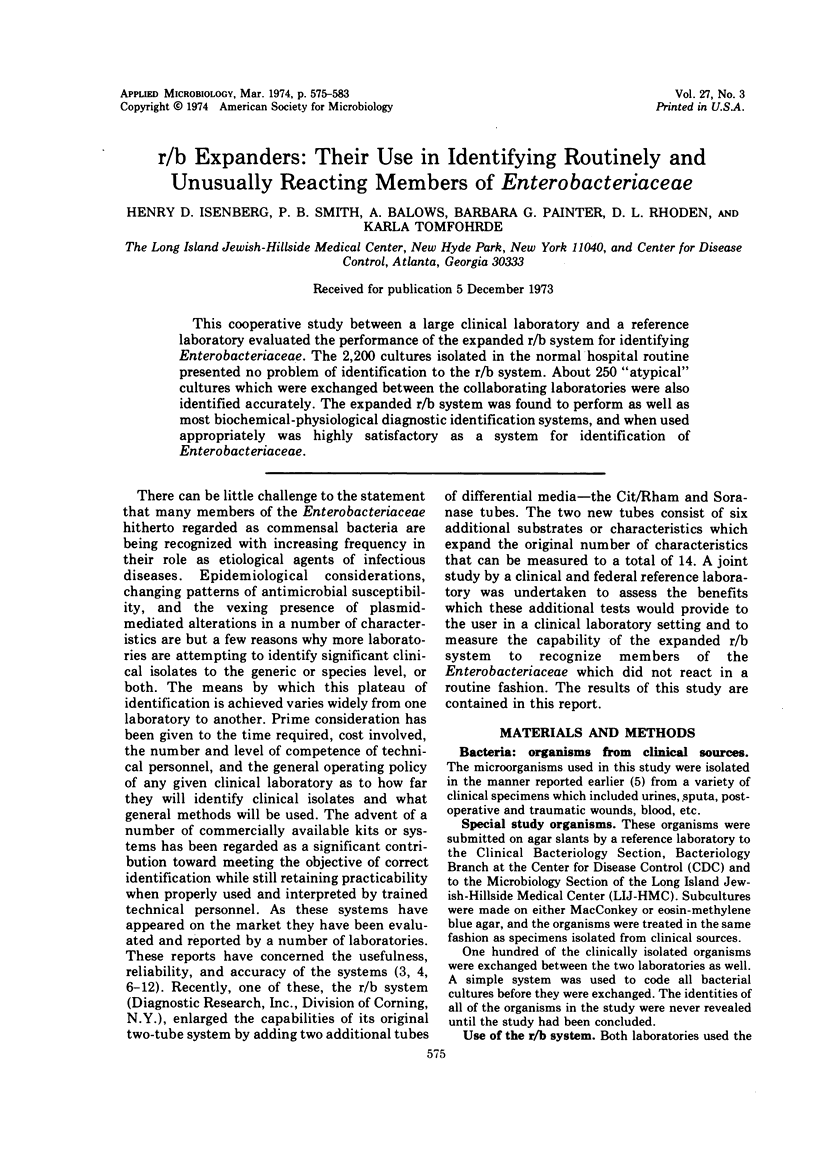
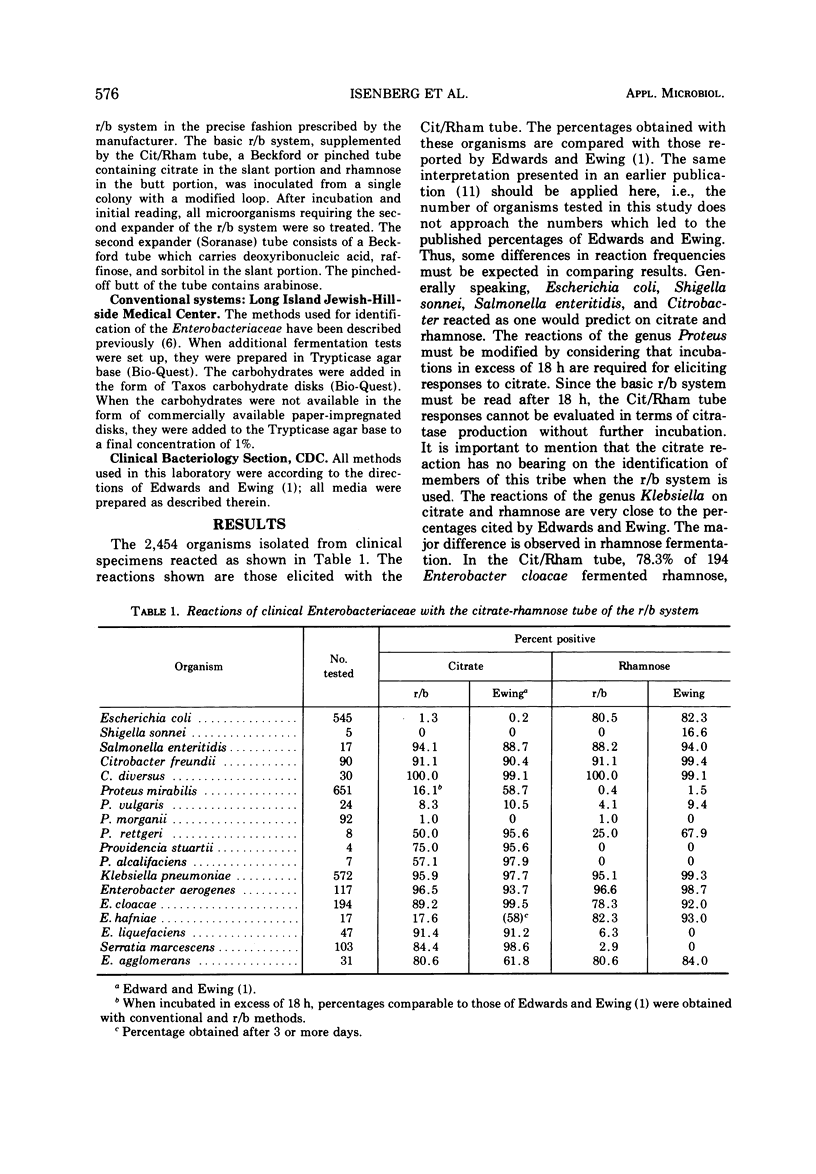
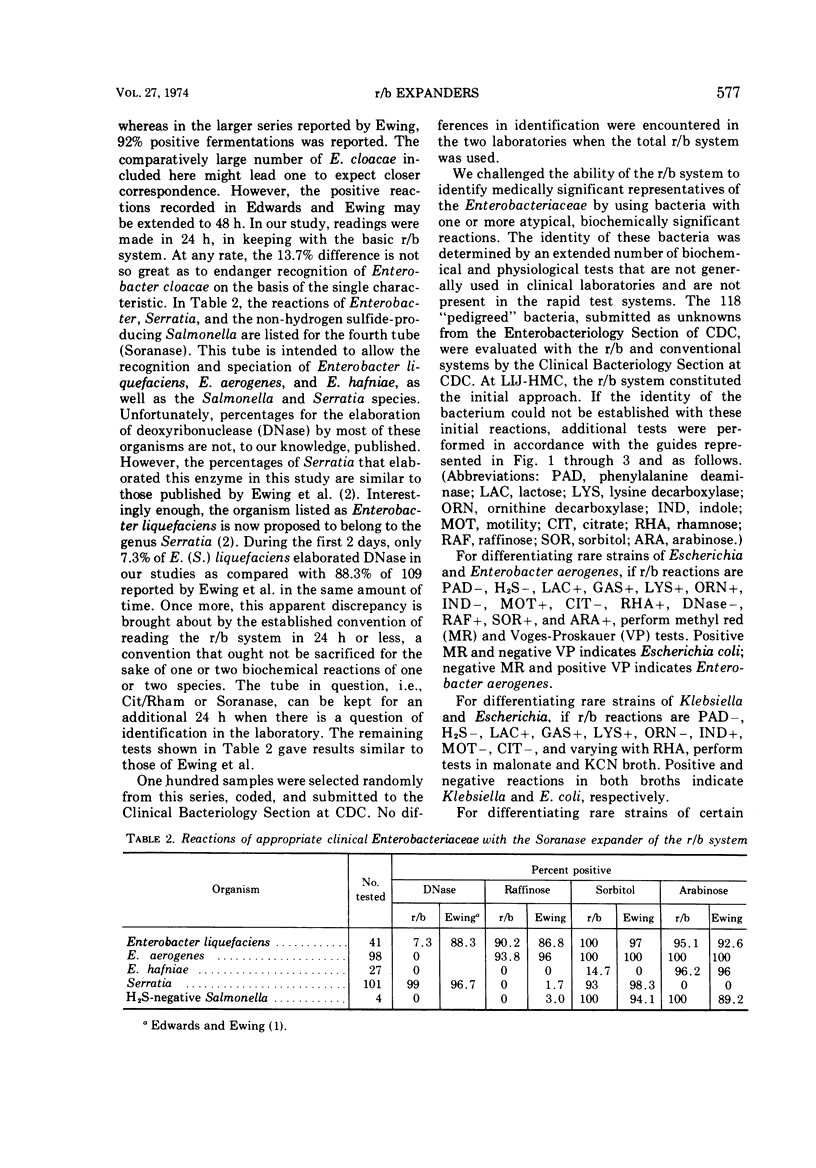
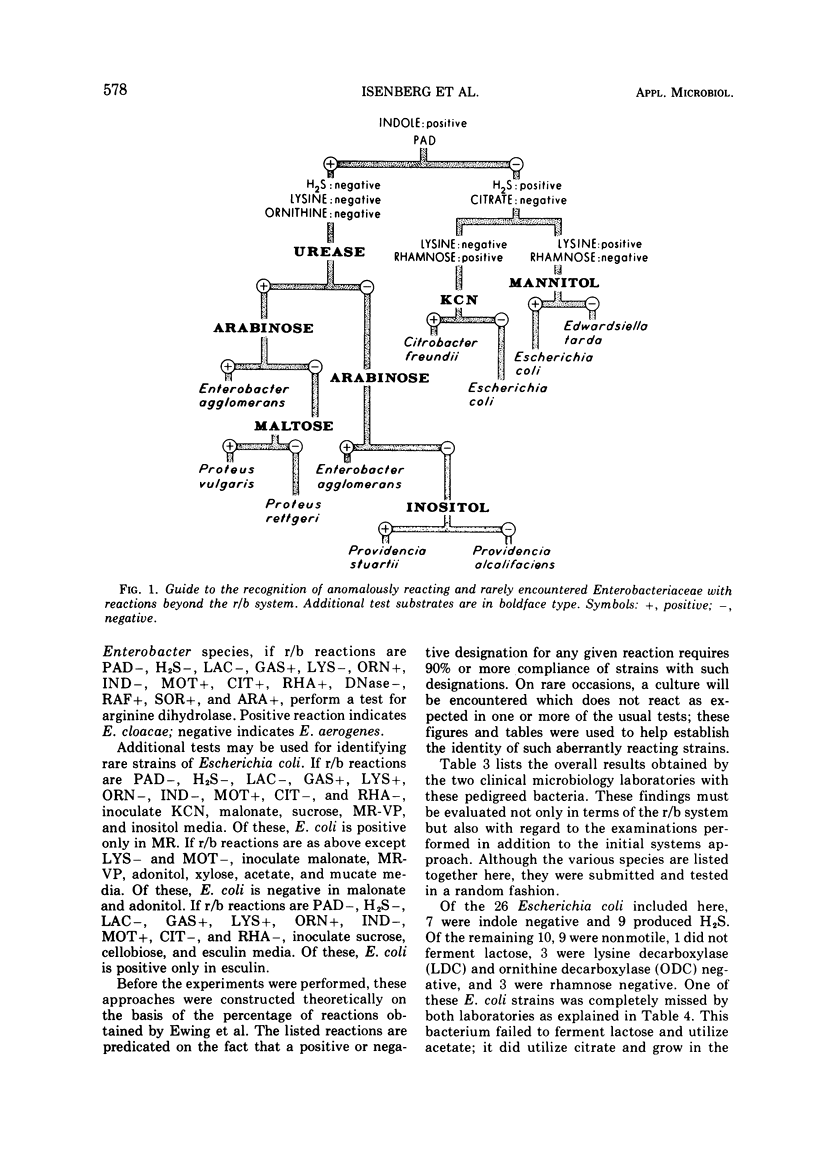
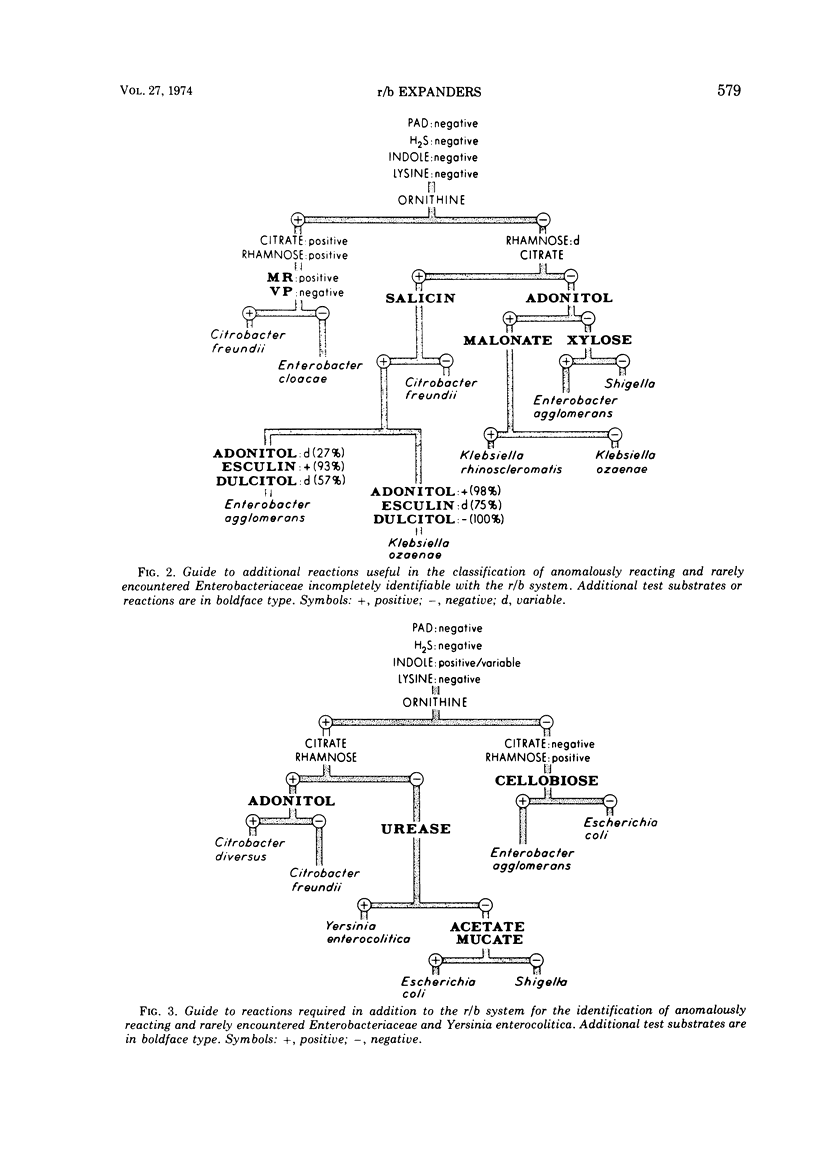
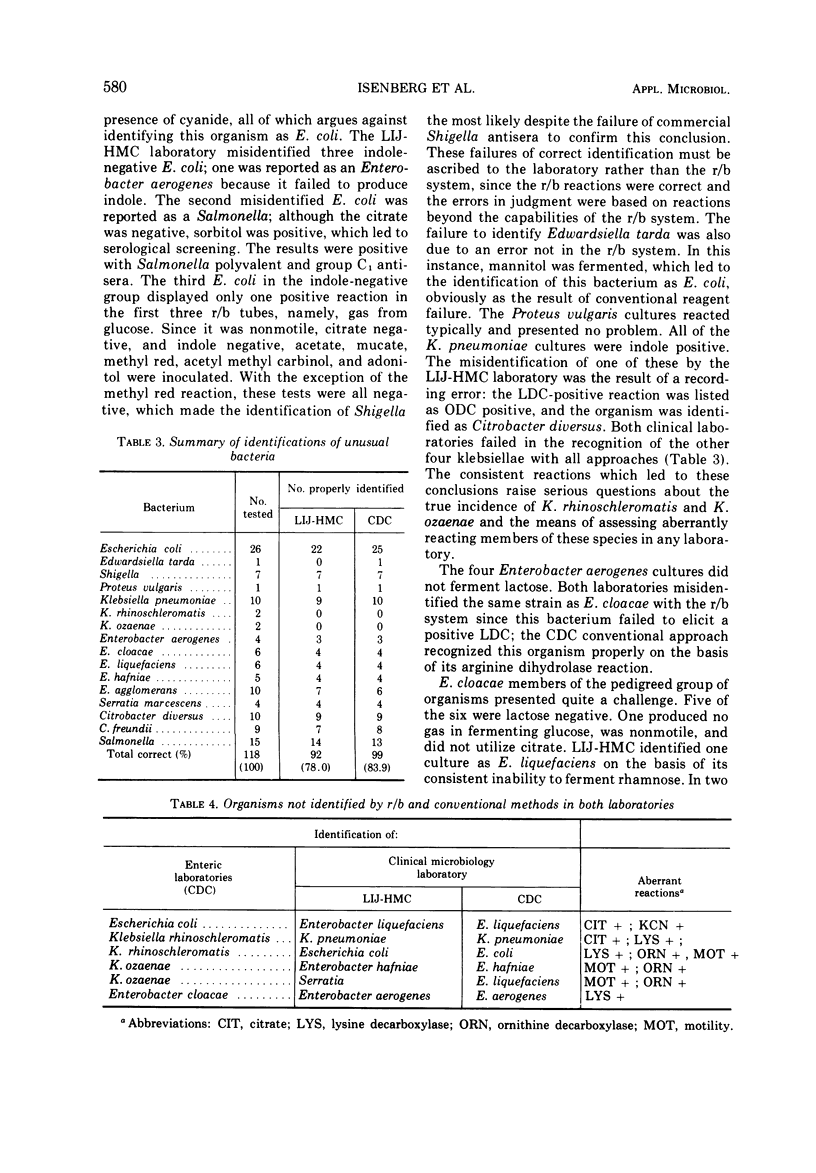
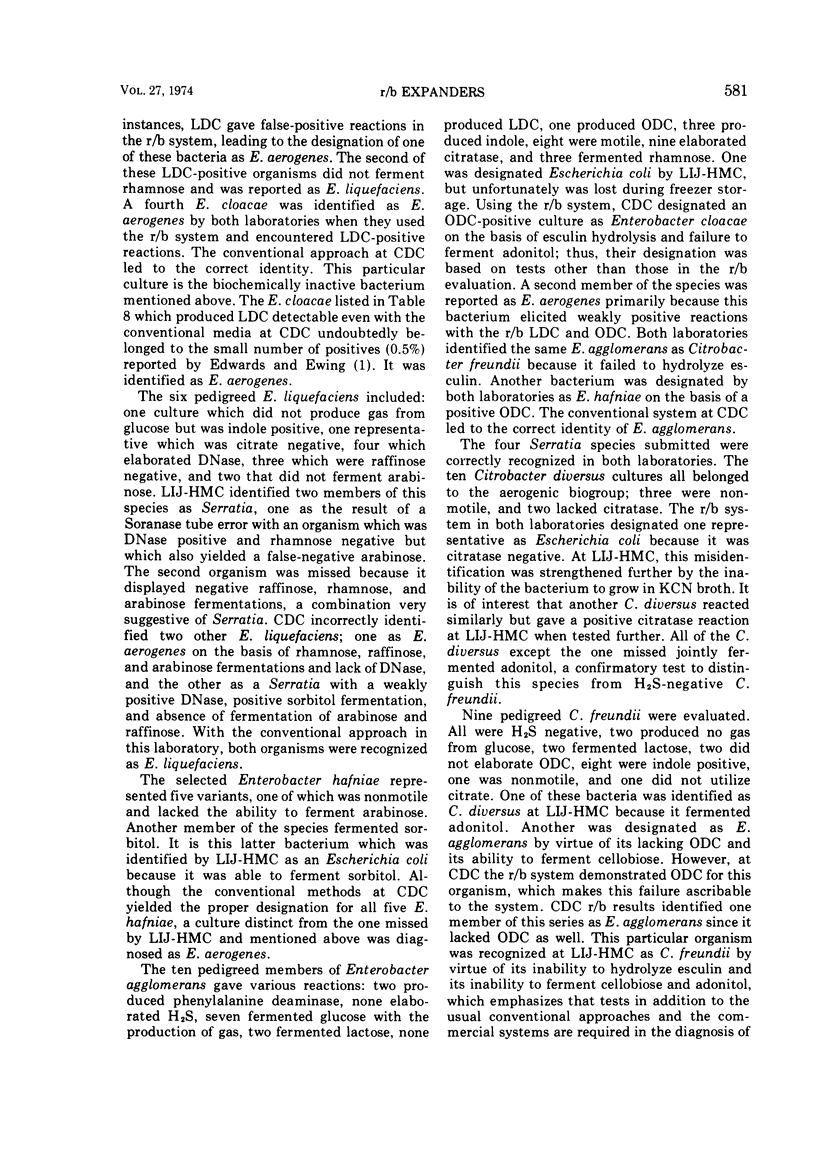
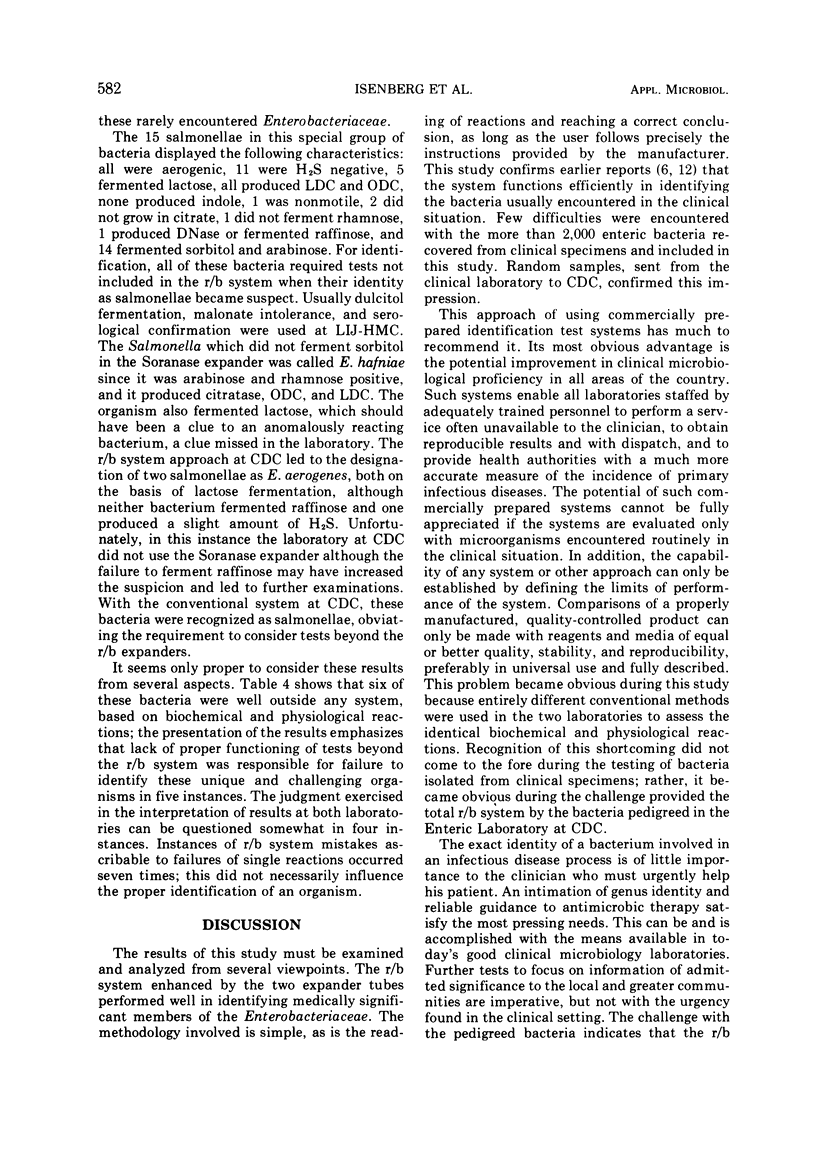
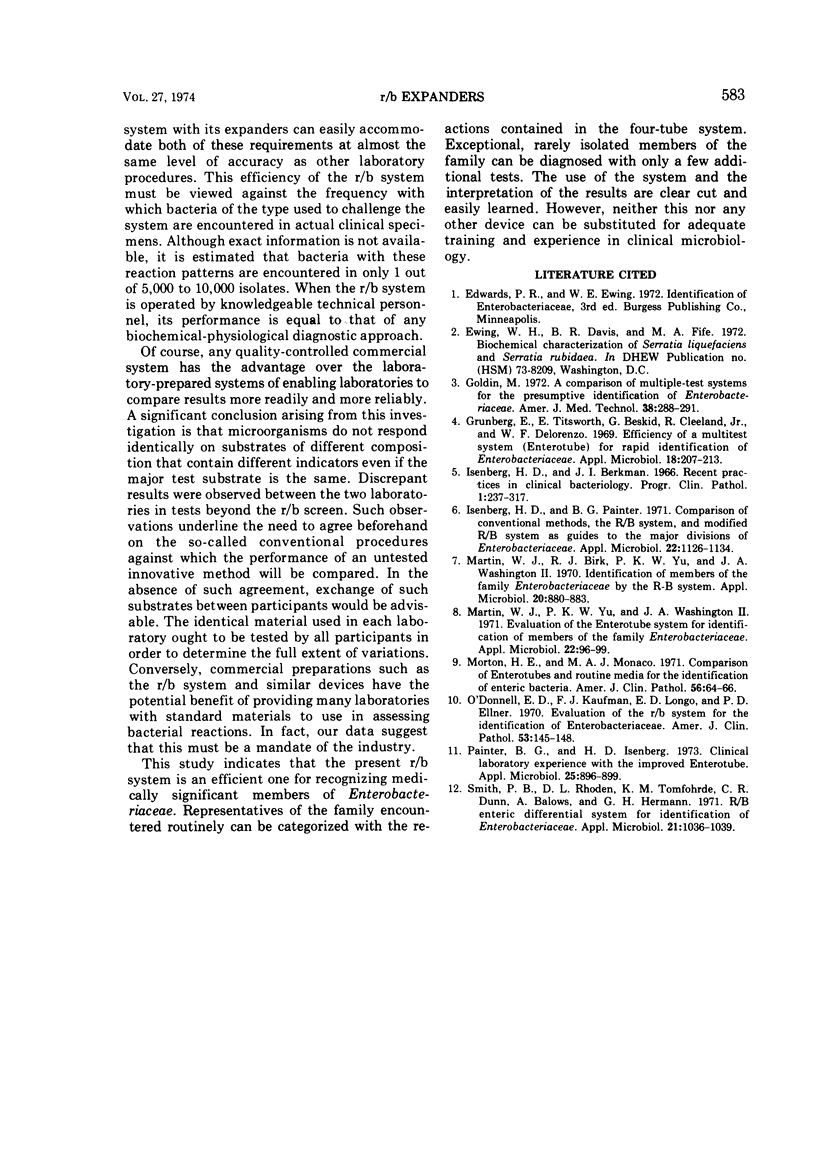
Selected References
These references are in PubMed. This may not be the complete list of references from this article.
- Goldin M. A comparison of multiple-test systems for the presumptive identification of enterobacteriaceae. Am J Med Technol. 1972 Aug;38(8):288–291. [PubMed] [Google Scholar]
- Isenberg H. D., Painter B. G. Comparison of conventional methods, the R-B system, and modified R-B system as guides to the major divisions of Enterobacteriaceae. Appl Microbiol. 1971 Dec;22(6):1126–1134. doi: 10.1128/am.22.6.1126-1134.1971. [DOI] [PMC free article] [PubMed] [Google Scholar]
- Martin W. J., Birk R. J., Yu P. K., Washington J. A., 2nd Identification of members of the family Enterobacteriaceae by the R-B system. Appl Microbiol. 1970 Dec;20(6):880–883. doi: 10.1128/am.20.6.880-883.1970. [DOI] [PMC free article] [PubMed] [Google Scholar]
- Martin W. J., Yu P. K., Washington J. A., 2nd Evaluation of the enterotube system for identification of members of the family Enterobacteriaceae. Appl Microbiol. 1971 Jul;22(1):96–99. doi: 10.1128/am.22.1.96-99.1971. [DOI] [PMC free article] [PubMed] [Google Scholar]
- Morton H. E., Monaco M. A. Comparison of enterotubes and routine media for the identification of enteric bacteria. Am J Clin Pathol. 1971 Jul;56(1):64–66. doi: 10.1093/ajcp/56.1.64. [DOI] [PubMed] [Google Scholar]
- O'Donnell E. D., Kaufman F. J., Longo E. D., Ellner P. D. Evaluation of the R-B system for the identification of enterobacteriacease. Am J Clin Pathol. 1970 Feb;53(2):145–148. doi: 10.1093/ajcp/53.2.145. [DOI] [PubMed] [Google Scholar]
- Painter B. G., Isenberg H. D. Clinical laboratory experience with the improved Enterotube. Appl Microbiol. 1973 Jun;25(6):896–899. doi: 10.1128/am.25.6.896-899.1973. [DOI] [PMC free article] [PubMed] [Google Scholar]
- Smith P. B., Rhoden D. L., Tomfohrde K. M., Dunn C. R., Balows A., Hermann G. J. R-B enteric differential system for identification of Enterobacteriaceae. Appl Microbiol. 1971 Jun;21(6):1036–1039. doi: 10.1128/am.21.6.1036-1039.1971. [DOI] [PMC free article] [PubMed] [Google Scholar]
- Titsworth E., Grunberg E., Beskid G., Cleeland R., Jr, Delorenzo W. F. Efficiency of a multitest system (Enterotube) for rapid identification of Enterobacteriaceae. Appl Microbiol. 1969 Aug;18(2):207–213. doi: 10.1128/am.18.2.207-213.1969. [DOI] [PMC free article] [PubMed] [Google Scholar]


